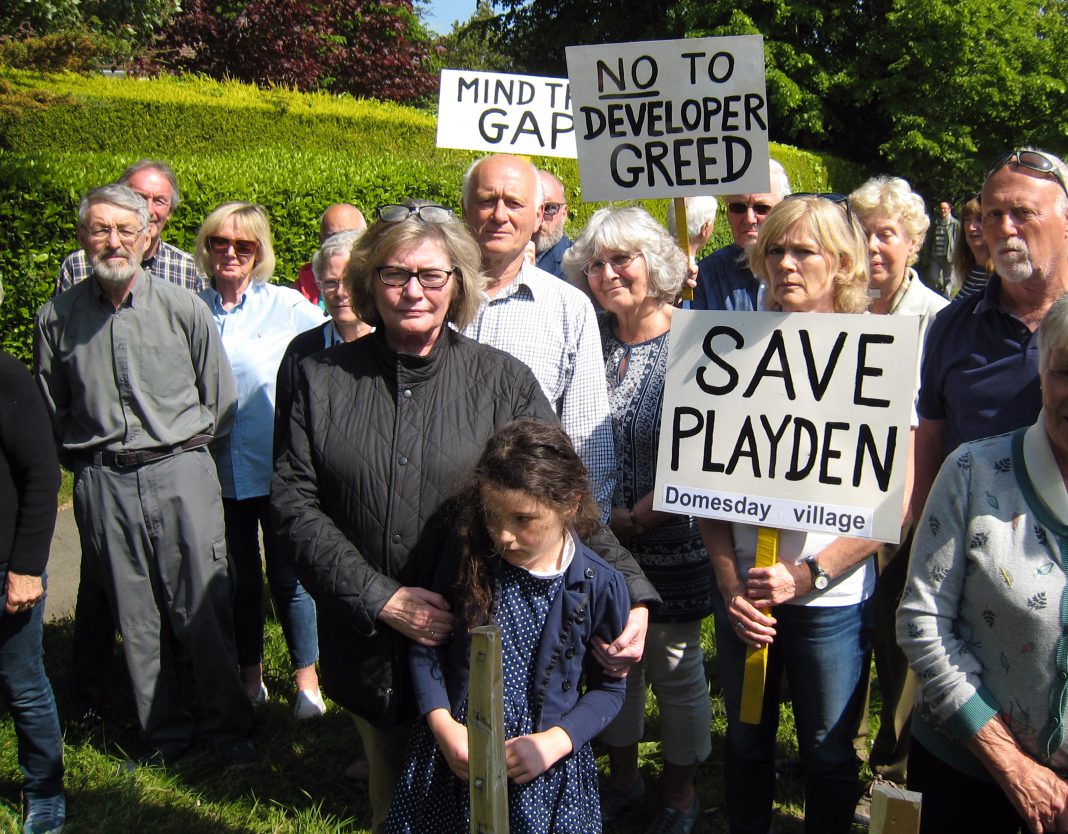Residents from Playden and north Rye are this week celebrating a victory against the latest housing estate proposal for the Shellfield property in Playden.
On Tuesday, June 9, Rother District Council comprehensively rejected the new ‘Permission in Principle’ (PiP) application for nine houses on the site. Not only has development here been mooted for three years, causing great worry for the local community, but nearby residents were especially concerned that a new application was submitted less than a year after the Planning Inspectorate refused a similar application on appeal.
Having objected to the Shellfield proposal from the start, as well as to several other planning applications in the area, I’ve often been critical of the way RDC treats local objectors. However, in this instance I have to congratulate the council’s planning team for one of the most clear-sighted reports ever handed down for the Rye area. I’ve read a lot of these reports, mostly with great trepidation.
The council’s decision notice and ‘D’ report for the Shellfield application (reference RR/2020/339/PIP) found that the housing estate proposal would not represent ‘sustainable development’ because the site lies outside the Rye development boundary and is therefore in the countryside — where strict development rules apply.
Access to services and facilities would be inadequate and several of RDC’s local plan core strategies would also be breached if the development had been approved.
“Significant and permanent harmful impact”
“The development by reason of its position within the spacious rural landscape setting between Playden and Rye and the proposed higher density of development, would have a significant and permanent harmful impact on the character and appearance of the area”, the decision concluded.
In effect, the RDC’s ruling very much resembles last year’s Planning Inspectorate appeal refusal of up to 24 homes on a slightly larger site at Shellfield. Residents had put forward the same, or similar, arguments for rejecting the proposal over the last three years.
But what local people are now asking is why they’ve been subjected to unwanted stress and worry for all this time, and forced to fend off application after application, in a bid to save their historic village environment.
Astonishingly, this battle could go on even longer if the landowner or his agent decide to lodge an appeal, in spite of the RDC’s definitive decision and the Planning Inspectorate’s appeal refusal.
“No way to prevent serial applicants”
There seems to be no way for planning authorities to prevent “serial applicants” from lodging planning applications every few months on the off-chance that local residents will be on holiday, undergoing a pandemic lockdown, or whatever — even after planning permission has been definitively denied for a site.
For many people I believe local planning has become a chaotic saga that seemingly never ends and government urgently needs to do something about it. Yet the proposed solution could prove more toxic than the current situation.
In fact, there could soon be even more serious worry for people seeking to protect their homes and environment from unending development. According to the Guido Fawkes website, Number 10’s new special advisor for Housing and Planning, Jack Airey, is said to be keen to “tear up the planning system and take back power and control from local bureaucrats who block new developments”.
For those interested, a key paper on planning’s future co-authored by Mr Airey can be found on the Policy Exchange website.
“Local politicians will have no say”
Among his proposals are for detailed land use allocations to be ended; land to be zoned as either development or non-development; overhauling and rewriting councils’ local plans; and setting up “a framework for administering planning applications that allows developers to respond to market conditions and innovate in the places where new development is suitable”. Infrastructure will be designed to support building development and local politicians will have no say over deciding development applications.
From this document’s content and tone, it appears that if these policy recommendations become law, developers will – to all intents – enjoy open slather in new development zones. Green belts could become a fond memory. Local people will have little or no say in protecting their neighbourhoods from urban blight and overdevelopment.
I can’t be the only person worried about a future where our living conditions and our natural environment will worsen substantially.
Image Credits: David Worwood .



